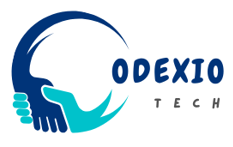In the rapidly evolving field of software development, traditional approaches to security are no longer sufficient. Modern practices demand seamless integration of development, security, and operations. This is where DevSecOps—an abbreviation for Development, Security, and Operations—comes into play. DevSecOps emphasizes incorporating security measures into every stage of the development lifecycle, ensuring that applications are secure, scalable, and efficient.
In this article, we’ll dive deep into what DevSecOps is, its significance in the software development lifecycle, its benefits, and best practices, concluding with how companies like Codexio Tech are driving innovation in this field.
Understanding DevSecOps
DevSecOps represents a cultural and technical shift in software development. Traditionally, security was an afterthought—a final step before software deployment. However, with DevSecOps, security becomes a shared responsibility across development, operations, and security teams from the outset.
Key Principles of DevSecOps
- Integrated Security: Security is woven into the development process, not just added at the end.
- Automation: Automating security processes like code scanning and vulnerability detection ensures consistency and speed.
- Collaboration: Encouraging collaboration between developers, security professionals, and operations teams fosters a shared sense of responsibility for security.
- Continuous Feedback: Regular monitoring and feedback loops help identify and address security issues in real-time.
Why is DevSecOps Important?
The rise of complex software systems and cloud-native applications has significantly increased the attack surface for malicious actors. Cybersecurity threats are more advanced and frequent than ever, and companies can no longer afford to treat security as an isolated phase.
Benefits of Adopting DevSecOps
- Improved Security Posture: By addressing security early, DevSecOps reduces vulnerabilities and mitigates risks.
- Faster Time to Market: Automated security tools and processes streamline development workflows, speeding up releases.
- Cost Efficiency: Fixing security flaws early in the development cycle is significantly cheaper than post-deployment remediation.
- Regulatory Compliance: Many industries face stringent compliance requirements, which DevSecOps helps to meet by ensuring security best practices are adhered to from the start.
Core Components of DevSecOps
- Code Analysis: Regularly inspecting code for vulnerabilities to ensure it meets security standards.
- Threat Modeling: Anticipating and identifying potential threats during the design phase.
- Security Testing: Automating tests like static application security testing (SAST) and dynamic application security testing (DAST) to detect vulnerabilities.
- Incident Response: Establishing a well-defined plan for detecting, managing, and mitigating security incidents.
- Compliance Monitoring: Ensuring that applications adhere to relevant legal and industry standards throughout development.

Tools and Technologies Supporting DevSecOps
A successful DevSecOps strategy relies heavily on automation tools that integrate seamlessly into existing development pipelines. Some popular tools include:
- Jenkins: For continuous integration and deployment.
- SonarQube: For code quality and security analysis.
- Twistlock: For container security.
- Aqua Security: For securing containerized environments.
- OWASP ZAP: For vulnerability scanning and assessment.
- HashiCorp Vault: For managing sensitive information like credentials and API keys.
These tools help teams maintain high levels of security without sacrificing development speed or quality.
Challenges in Implementing DevSecOps
Despite its numerous benefits, implementing DevSecOps isn’t without challenges. Companies often face the following obstacles:
- Cultural Resistance: Shifting the mindset from isolated teams to a collaborative approach requires time and effort.
- Skill Gaps: Developers and operations teams may lack the expertise to integrate security practices effectively.
- Tool Overload: With a plethora of DevSecOps tools available, selecting and managing the right ones can be overwhelming.
- Legacy Systems: Integrating security into outdated systems and workflows can be complex.
To overcome these challenges, organizations need a clear strategy, effective training programs, and strong leadership support.
Best Practices for DevSecOps Implementation
- Start with a Security-First Mindset
Foster a culture where security is everyone’s responsibility. Provide training and resources to help teams understand the importance of secure development. - Automate Security Processes
Use tools that can automatically scan code, monitor environments, and enforce security policies without disrupting workflows. - Embed Security into CI/CD Pipelines
Continuous integration and continuous deployment pipelines should include automated security checks at every stage. - Measure and Monitor
Regularly track security metrics and KPIs, such as vulnerability detection rates, mean time to resolution, and compliance scores. - Foster Collaboration
Break down silos between development, security, and operations teams through open communication and shared objectives.
The Role of DevSecOps in Modern Software Development
DevSecOps has become a cornerstone of modern software development practices. It addresses the growing demand for secure, high-performing applications in industries ranging from finance to healthcare to e-commerce. As businesses increasingly rely on digital solutions, adopting DevSecOps isn’t just an option—it’s a necessity.
Organizations that embrace DevSecOps can not only deliver secure products faster but also gain a competitive edge in a crowded market. The proactive approach of DevSecOps mitigates risks, builds customer trust, and ensures long-term sustainability.
Conclusion
In today’s fast-paced digital landscape, security can no longer be an afterthought. DevSecOps bridges the gap between development, security, and operations, creating a seamless workflow that prioritizes secure and efficient software delivery. By integrating security into every stage of the development lifecycle, organizations can address vulnerabilities proactively, reduce costs, and accelerate time to market.
Companies like Codexio Tech are leading the charge in implementing DevSecOps practices. With a commitment to fostering secure and innovative software solutions, Codexio Tech exemplifies how modern businesses can harness the power of DevSecOps to stay ahead in an ever-changing technological landscape.

